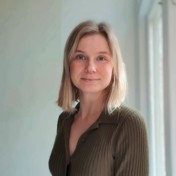Can you tell us briefly about the project you are working on?
We are mapping out various formal and informal networks between the Nordic countries regarding the cooperation and coordination of return and readmission policies and practices. We are also examining, among other things, how and why these networks have come into existence, how they function, and in what ways they are assumed to contribute to a return process that is efficient, legally sound, and humane. We are also looking at where there is room for improvement and examining what obstacles exist when it comes to establishing a broader Nordic cooperation in the area of return.
Can you tell us about the ongoing work in the sub-project?
We are in the middle of our data collection phase, which is based mainly on interviews. We are interviewing people in Sweden, Norway, Denmark, Finland, and Iceland who work with return and readmission in different ways. To ensure that we cover as many perspectives as possible, we have, for all Nordic countries, interviewed people within the various ministries (e.g., the Ministry of Justice and the Ministry of Foreign Affairs), return implementation authorities (e.g., the police and migration authorities), as well as embassy staff/Return Liaison Officers, and civil society actors.
Can you tell us a little about your preliminary results?
On October 31, 2023, a press release was released from a ministerial meeting that took place within the framework of the NSHF (High-Level Nordic Cooperation on Refugee Issues). The press release stated that it was decided at the meeting that the five Nordic countries should work together on three initiatives to strengthen cooperation regarding return and readmission. So far, through our interviews, we have noticed that return is a priority area within all the Nordic countries and that Nordic cooperation is desired by a majority who have been interviewed thus far. Nordic cooperation has taken place through various forms and has involved both formal and non-formal networks at the political and operational level. Cooperation has also increased in recent years against the background that the Nordic countries have increasingly more aligned migration policies, where Sweden, among others, has moved towards a more restrictive stance. Since it is almost impossible to find research that concerns Nordic cooperation on these issues, it is especially important that we, as the authors of this report, try to map out what Nordic cooperation has looked/looks like, how it works, if it is regarded as necessary by those who work daily with these issues, and why a Nordic cooperation is (or isn’t) regarded as necessary alongside an EU cooperation.



